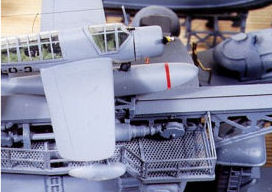|
Getting To WOW!
|
||||||||||||||||||
| Getting to Wow. It's an instinctive reaction. When someone experiences the amazing, the incredible or the exhilarating, they have only one reaction "Wow." Bet on it. Getting a Wow from viewers of pictures of your scale modeling project takes a lot more than slapping together a dime store model car and snapping off a couple of picture with your cell phone. |
|||
|
Start with a subject you know. When you know the subject or your modeling effort, you see things. Details that others aren't even aware should be there. The video at the left is an example. |
|||
| Based on those photographs, he drafted the
schematics and made the molds for all parts of the model, a process which
took 7 years. In total, Scerri invested 20,000 hours into this project.
(If he worked at it 24 hours a day, seven days a week and took no time
off, he would have racked up 8,760 hours in a year. You'll also notice in the video, he didn't do this on the kitchen table. The Ferrari is now in the hands of "Fine Art Models", based in Royal
Oak, MI a small company that specializes in producing the finest scale
models in the world/ Of Scerri's Ferrari they said, |
|||
|
Up Close and Personal |
|||
| When you have the perfect model completed, the
one you have been working on for years, the last thing you want to do is
expose it to out-of-focus and poorly lit photographs. You can check out the world of macrophotography with your own digital camera. Most current digital cameras have a macro mode that lets you get a sharp focus within just a few inches of the subject. When you get that close, especially if you zoom in, you can get great results. Most cameras don't automatically close-focus. Instead, you need to activate that setting by pressing a button on the camera body. Most manufacturers use the familiar tulip symbol to indicate macro mode--look on the camera body, or perhaps on the LCD menu system, like mine which shows up in the viewfinder. You will find that the closer you get to your subject using a macro lens, the more you lose depth of field. It drops from multiple feet in normal mode down to an inch or two in macro even a fraction of an inch that will stay in focus. The advantage of a very narrow depth of field is that the background will be blurry and indistinct--which is usually a nice effect when shooting ultra close-ups. But if it is something you don't desire, your camera may allow you to select a higher aperture setting like f/16 or f/32. At this point you you should check your camera’s image size setting. Most digitals are ready to shoot at a variety of size settings (in pixels) which you can change. Check your manual. Today's digitals shoot pictures with a resolution (size) of 2560 x 1920. For miniature photography, you'll be happier with a size of 1280 x 960. When it comes to downloading (and uploading) pictures, smaller is obviously better. |
|||
|
|||
|
N-scale scratch building is always a fertile field for finding structures that will get a Wow reaction. |
|||




